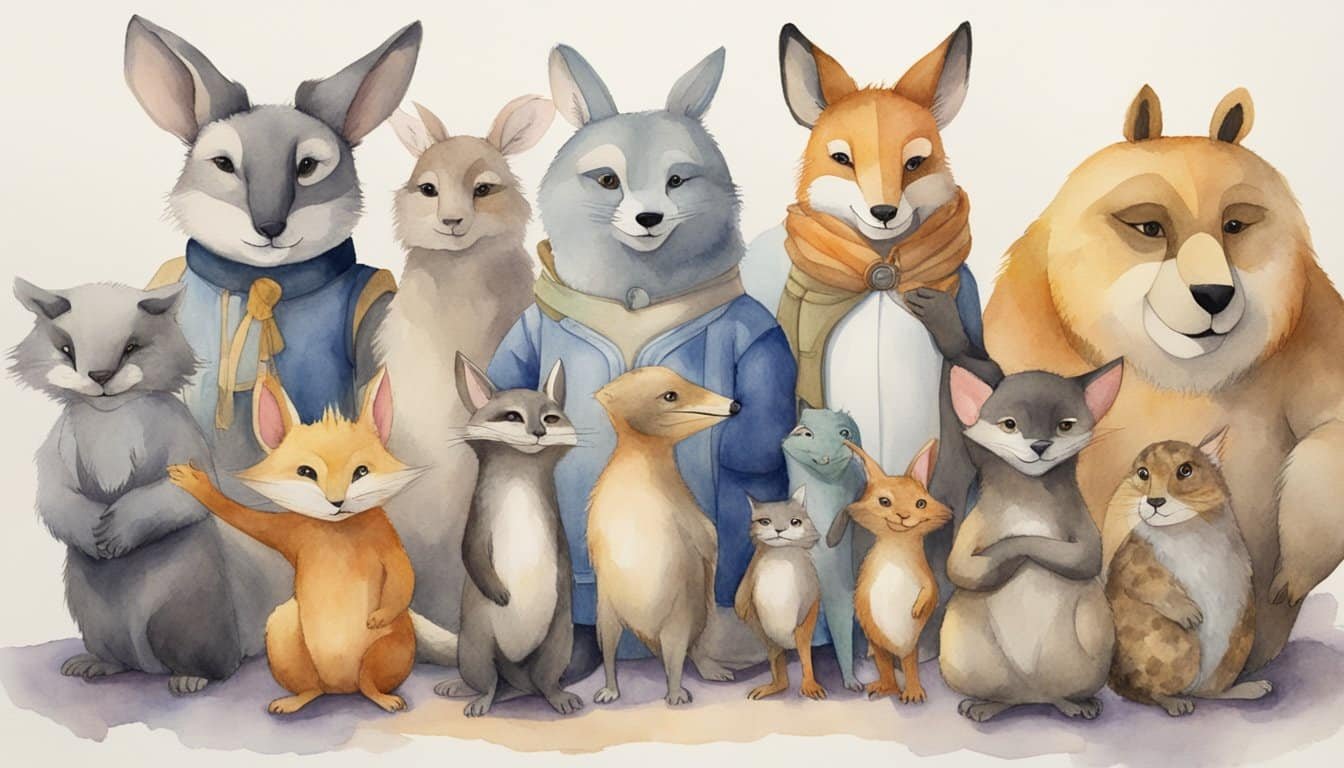Defining the Furry Fandom
The furry fandom is an inclusive culture centered on the appreciation and creation of anthropomorphic animal characters.
Core Concepts
The foundation of the furry fandom rests on its core concept: an immense interest in anthropomorphic animals, which are animals with human characteristics. Individuals within the fandom, known as furries, often create a fursona—a personalized anthropomorphic animal avatar that reflects their identity, characteristics, or aspirational traits. This persona can be a creative outlet and a means of exploring their personalities in a unique and artistic way.
Cultural Origins and History
Furry fandom is often traced back to early comic conventions in the 1970s, where a group of fans shared an interest in anthropomorphic literature and art. Over time, it evolved into a distinct community with its own gatherings known as furry conventions. This culture has historical ties to science fiction and fantasy communities, with roots connected to animated cartoons and comic books that feature human-like animals.
Community and Identity
At the heart of furry fandom lies its community, characterized by its vibrant expressions of fan art, literature, and costuming, commonly known as fursuiting. Community members often gather at conventions to celebrate, but they also connect extensively online. Identity within this community is multifaceted; furries derive a sense of belonging from their shared interests, but there are varied expressions of what it means to be a “furry.” The community’s inclusivity fosters an environment where people feel comfortable expressing diverse aspects of their fursonas and identities. Furries often report that the fandom is a positive influence on their lives, offering friendship, a sense of community, and an avenue for creativity.
Expression and Participation

The furry fandom is a rich tapestry where participants express their identities and connect with others. This expression comes to life in various forms, from the creation of fursonas to the craftsmanship involved in fursuit construction, and through lively participation in furry conventions and the arts.
Fursonas and Avatars
A fursona is an anthropomorphic animal character that a member of the furry community adopts as a form of self-representation, often embodying the user’s personality, aspirations, or desired traits. These avatars are used in online communities and are foundational to social interactions within the fandom. They range from simple sketches to detailed digital or traditional artwork, each holding significant meaning to their creator.
Fursuits and Costuming
For many furries, wearing a fursuit or other types of costuming is an exciting way to bring their fursona into the physical world. The suits range from partials, which include just the head, paws, and tail, to full-bodied suits. This physical representation allows an individual to perform and interact with others in a more visibly expressive way, echoing the traits of their persona. The intricate craft and care put into fursuit construction can be seen as an art form unto itself.
Conventions and Events
Furry conventions are pivotal to the community, acting as a nexus for socialization, performance, and the exchange of ideas. These events span from local gatherings to international spectacles, providing a space for furries to meet, attend workshops, exchange art, and celebrate their shared interests. Participation in these events helps reinforce community bonds and fosters a sense of belonging.
Art, Media, and Creativity
Creativity flourishes in the furry community. Furries contribute to a vibrant culture of art and media, encompassing a wide range of mediums from drawing, painting, writing, and digital creation to music and performance arts. This creative output is not only a means of self-expression but also a way to contribute to the collective fandom culture, often blurring the lines between creator and audience.
Societal Interactions and Perceptions

Within the context of the furry fandom, the interplay between furries and society at large is shaped by various factors, from media portrayal to community dynamics. These interactions are critical for understanding furry presence and influence.
Furry Representation in Media
The depiction of furries in media often revolves around anthropomorphic characters, ranging from cartoons to mascots, which sometimes translates to how the furry fandom is perceived publicly. Media coverage can be a double-edged sword: it can demystify the fandom and introduce the creativity behind it or cast furries in an unfavorable light when focusing on more sensational aspects. Websites like WikiFur attempt to address misinformation by documenting furry activities and media portrayals from within the community.
Public Perception and Stereotypes
Public perception of the furry fandom is a tapestry woven with diverse threads, influenced by media portrayal, popular culture, and individual anecdotes. Stereotypes often emerge from a lack of understanding, leading to various misconceptions about the community’s nature. Research, such as the studies referenced by Springer, is crucial in challenging these stereotypes, showcasing the complex identity and social interaction within the fandom. Misinformation continues to challenge how furries are perceived, affecting their psychological well-being.
Furry Community and Social Dynamics
The furry community is not monolithic; it is a vibrant and dynamic space where furries engage in social interaction, celebrating shared interests and diverse identities. Social scientists have noted the community’s role in fostering psychological well-being among its members, contradicting stereotypes that suggest otherwise. Community events and forums provide spaces for furries to express themselves, and research such as that found on Intellect Discover highlights the complexity of identity negotiation within the fandom. The fandom thrives on creativity, inclusivity, and mutual support, characteristics often overshadowed by external misconceptions.

